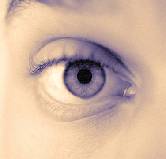
TUESDAY, May 8 (HealthDay News) — Eye color may help predict risk for vitiligo, an autoimmune disease in which the skin loses its pigment, a new study finds.
The study of nearly 3,000 non-Hispanic Americans of European descent found people with blue eyes are less likely to have vitiligo. Researchers also identified 13 new genes that may predispose people to the condition, which often results in uneven patches of white skin and hair.
About 27 percent of people with vitiligo had blue/gray eyes, compared with 52 percent of Americans of non-Hispanic European descent without the skin condition. Meanwhile, 43 percent of people with vitiligo had tan or brown eyes, compared with 27 percent Americans of non-Hispanic European descent. About 30 percent of the patients with vitiligo had green or hazel eyes.
Although the study focused on vitiligo, the researchers noted their findings could shed light on how eye color may help predict people’s risk for melanoma. People with brown eyes are at lower risk of melanoma.
“Genetically, in some ways vitiligo and melanoma are polar opposites. Some of the same genetic variations that make one more likely to have vitiligo make one less likely to have melanoma, and vice versa,” Dr. Richard Spritz, director of the Human Medical Genetics and Genomics Program at University of Colorado School of Medicine, said in a university news release. “Vitiligo is an autoimmune disease, in which a person’s immune system attacks their normal pigment cells. We think that vitiligo represents overactivity of a normal process by which one’s immune system searches out and destroys early cancerous melanoma cells.”
Since people with vitiligo are at greater risk for other autoimmune diseases, such as thyroid disease and type 1 diabetes, the study’s authors concluded their findings could help scientists learn more about the genetic basis for these diseases as well.
The study appeared online May 6 in Nature Genetics.
More information
The American Vitiligo Research Foundation provides more information on vitiligo and melanoma.

